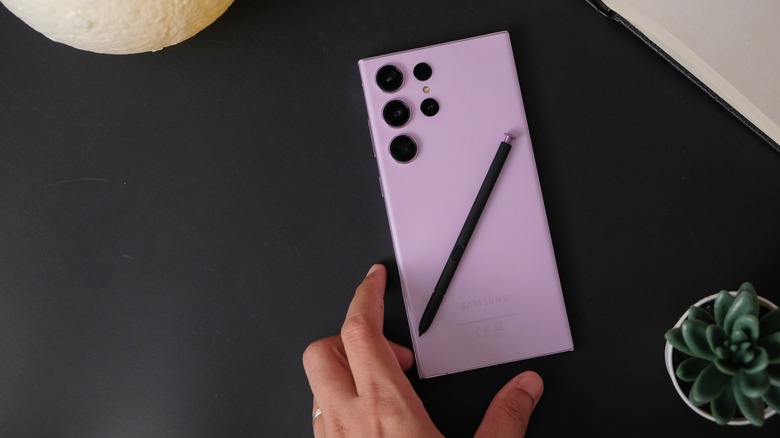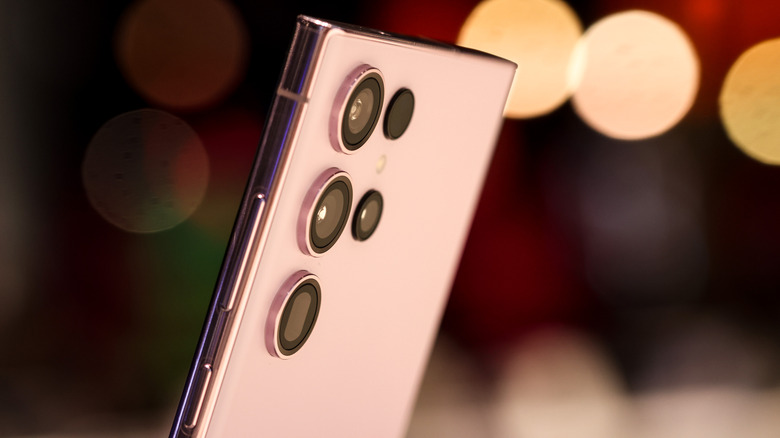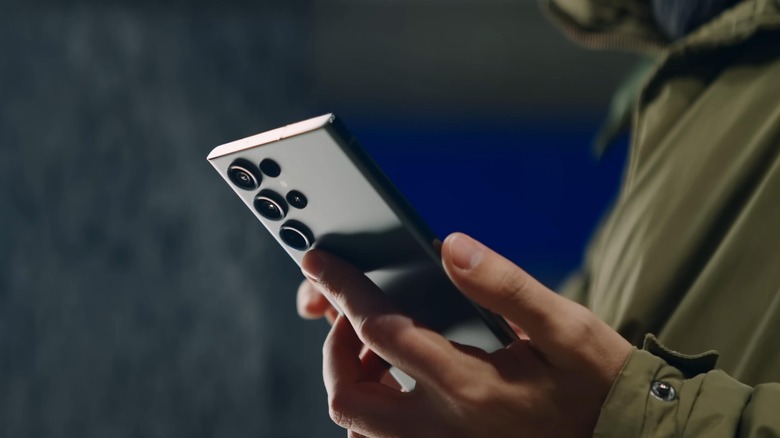Samsung's New Zoom Anyplace Camera Tech Could Bring Some Handy Tricks To Galaxy S24 Ultra
Samsung's 200MP ISOCELL sensors have been around for quite some time now, with Samsung itself using the 200MP ISOCELL HP2 sensor on the company's current flagship, the Samsung Galaxy S23 Ultra. It is now increasingly likely that Samsung may use a similar sensor on the company's flagship device for 2024 — the Samsung Galaxy S24 Ultra — albeit with a bunch of new feature additions. In a press release, Samsung announced a couple of interesting imaging-focused technologies that are set to arrive on devices using its 200MP sensors.
Samsung claims these technologies — Zoom Anyplace and E2E AI Remosaic for Image Capture — are designed to significantly improve the camera capabilities of smartphones that specifically use the company's 200MP ISOCELL image sensors.
The first of these technologies, Zoom Anyplace, is powered by Qualcomm's new AI engine, which debuted on the company's recently announced Snapdragon 8 Gen 3 processor. This is a new video-focused feature that uses artificial intelligence (AI) to automatically track and film moving subjects.
The second feature, E2E AI Remosaic for Image Capture, is essentially an improved image processing technology that speeds up the image processing times on Samsung devices. Aside from enabling faster image capture, this technology also minimizes data loss that usually takes place during the older sequential image processing technique, leading to better colors and richer details.
Samsung Zoom Anyplace: Everything you want to know
Zoom Anyplace is expected to be one of the key features of Samsung's next-generation flagship smartphone, the Samsung Galaxy S24 Ultra, scheduled for launch in the first half of 2024. While Samsung is yet to officially confirm this, the promotional video for the technology makes it clear that the technology is powered by Qualcomm's new AI Engine, which made its debut with the Snapdragon 8 Gen 3 chip — the very chip that is likely to power the Galaxy S24 Ultra.
As outlined earlier, Samsung claims that Zoom Anyplace uses AI to identify and track moving objects in the frame. Once a subject has been identified, Zoom Anyplace will automatically keep the subject in focus and centered in the frame, even if the subject is moving erratically. This technology could prove helpful for people who use their smartphones to shoot sporting events, concerts, and events where the subjects tend to move around a lot, making it difficult to keep track of them.
In addition to its automatic tracking capabilities, Zoom Anyplace also offers a number of other features, including the ability to zoom in and out on a subject without losing focus or resolution while keeping a subject centered in the frame. The promotional video showcasing Zoom Anyplace in action makes the technology seem like an interesting new addition to Samsung's video capture capabilities, which have traditionally lagged behind Apple's.
What Is Samsung's E2E AI Remosaic for Image Capture?
Samsung's E2E AI Remosaic for Image Capture is essentially a new way the camera sensor communicates and processes image data to the ISP. On older devices, Samsung used a sequential technology to process high-resolution images. With E2E AI Remosaic for Image Capture, this process pipeline has been replaced with a sequential process, making the overall image capture process faster. This feature will likely reduce the shutter lag and latency issues many users have complained about on the S23 Ultra when capturing high-resolution images.
Besides faster image capture times, the technology could also let users take photos with richer details and colors. This is because E2E AI Remosaic for Image Capture also involves Samsung's ISP analyzing the raw image data and applying AI-powered algorithms to optimize the image quality. Samsung also adds that the lesser number of steps involved in the image processing pipeline also leads to lower data loss, leading to better color reproduction and more details.
We are speculating that both of the imaging-centric features announced by Samsung today will indeed make it to the company's next-generation flagships. If they do end up arriving on the Samsung Galaxy S24 Ultra in 2024, we might as well see a significant improvement in the phone's imaging and video-capture capabilities.


